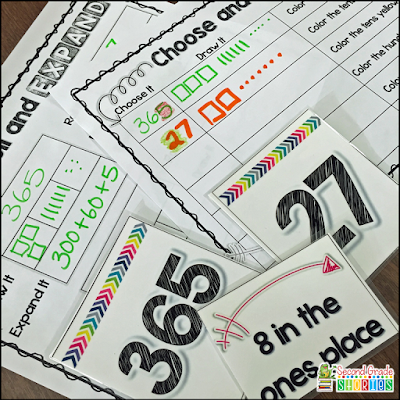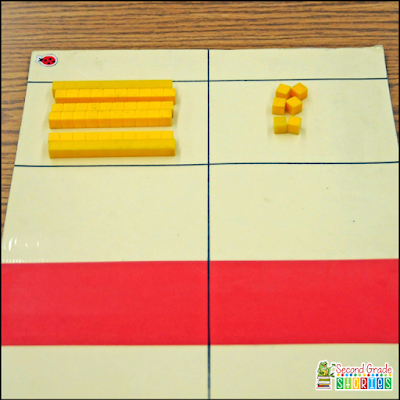Happy Saturday, friends! Welcome to the weekend!
I'm jumping on with a quick post so I can show off my brand new blog design! Eeek! Isn't it fantastic! The wonderful Megan Favre over at A Bird in Hand Designs (also from I Teach What's Your Superpower?) created the new look for me. I looooove the bright and streamlined design of the Georgia Lou Studios templates. And the mobile view..... swoon! But if you're reading this on a tablet or phone, then you already know that!
And the best part - my new froggy!!! I cannot tell you how much I am in love with this little creature! She was custom designed by Sarah Pecorino, a fellow New Englander and I am in love! Sarah knew exactly what I wanted and created a froggy filled with personality. She has some great clip art in her TpT store - her style is so bright and cheery.
Both Megan and Sarah were so easy to work with and were very responsive to my (slightly obsessive?) requests. Be sure you check out all their social media and stores for great clipart, blog design and more!
So what's new in second grade this week? We have been working our little brains to the limit with some subtraction with regrouping. This is one of those concepts that kiddos either get pretty easily, or need A LOT of support to be comfortable with.
Here's my biggest tip for successfully teaching this skill: have a STRONG foundation of place value in place before you even try to introduce this concept. We did a little place value review for a day or two before we began this topic. We reviewed, practiced, enriched and scaffolded using games as one of our math group rotations.
The thing I love about these games is that the cards meet EVERY child's needs. Working on 3-digit numbers? No problem. Need a little review with 2-digit - you're covered. Ready for some enrichment? It's all there. Everyone played the same games, but used whatever cards they needed to practice with. Instant (and easy!) differentiation! (The game resource is available in my store - you can check it out HERE.)
Once we had reviewed place value, we were ready for the subtraction to start! Another thing that is sooo important with this skill is to make sure students know they WHY before they know the HOW. Just teaching the algorithm does no good if students don't understand why they're moving all those blocks around.
My favorite way to introduce this concept is with these easy-to-make boards.
These boards, along with base-10 blocks or place value disks (I have used both successfully) work as a great transition from concrete manipulatives to the abstract algorithm. They give students a clear picture of how the process of regrouping works and gives them hands-on experience moving those blocks around. By the way - I have started calling it "ungrouping" now, instead of "regrouping." That might not be a new term to many of you, but to me it was brilliant! My kiddos instantly understood the difference between REgrouping in addition and UNgrouping with subtraction.
Ready to see how these boards work? Click HERE (or on the image above) for a step-by-step tutorial showing them in use. Not ready for subtraction yet? You can use the boards for addition with regrouping, as well!
There are so many different ways to help students understand this skill. I hope these boards have given you one more tool for instruction!
I'm jumping on with a quick post so I can show off my brand new blog design! Eeek! Isn't it fantastic! The wonderful Megan Favre over at A Bird in Hand Designs (also from I Teach What's Your Superpower?) created the new look for me. I looooove the bright and streamlined design of the Georgia Lou Studios templates. And the mobile view..... swoon! But if you're reading this on a tablet or phone, then you already know that!
And the best part - my new froggy!!! I cannot tell you how much I am in love with this little creature! She was custom designed by Sarah Pecorino, a fellow New Englander and I am in love! Sarah knew exactly what I wanted and created a froggy filled with personality. She has some great clip art in her TpT store - her style is so bright and cheery.
Both Megan and Sarah were so easy to work with and were very responsive to my (slightly obsessive?) requests. Be sure you check out all their social media and stores for great clipart, blog design and more!
So what's new in second grade this week? We have been working our little brains to the limit with some subtraction with regrouping. This is one of those concepts that kiddos either get pretty easily, or need A LOT of support to be comfortable with.
Here's my biggest tip for successfully teaching this skill: have a STRONG foundation of place value in place before you even try to introduce this concept. We did a little place value review for a day or two before we began this topic. We reviewed, practiced, enriched and scaffolded using games as one of our math group rotations.
The thing I love about these games is that the cards meet EVERY child's needs. Working on 3-digit numbers? No problem. Need a little review with 2-digit - you're covered. Ready for some enrichment? It's all there. Everyone played the same games, but used whatever cards they needed to practice with. Instant (and easy!) differentiation! (The game resource is available in my store - you can check it out HERE.)
Once we had reviewed place value, we were ready for the subtraction to start! Another thing that is sooo important with this skill is to make sure students know they WHY before they know the HOW. Just teaching the algorithm does no good if students don't understand why they're moving all those blocks around.
My favorite way to introduce this concept is with these easy-to-make boards.
These boards, along with base-10 blocks or place value disks (I have used both successfully) work as a great transition from concrete manipulatives to the abstract algorithm. They give students a clear picture of how the process of regrouping works and gives them hands-on experience moving those blocks around. By the way - I have started calling it "ungrouping" now, instead of "regrouping." That might not be a new term to many of you, but to me it was brilliant! My kiddos instantly understood the difference between REgrouping in addition and UNgrouping with subtraction.
Ready to see how these boards work? Click HERE (or on the image above) for a step-by-step tutorial showing them in use. Not ready for subtraction yet? You can use the boards for addition with regrouping, as well!
There are so many different ways to help students understand this skill. I hope these boards have given you one more tool for instruction!




































